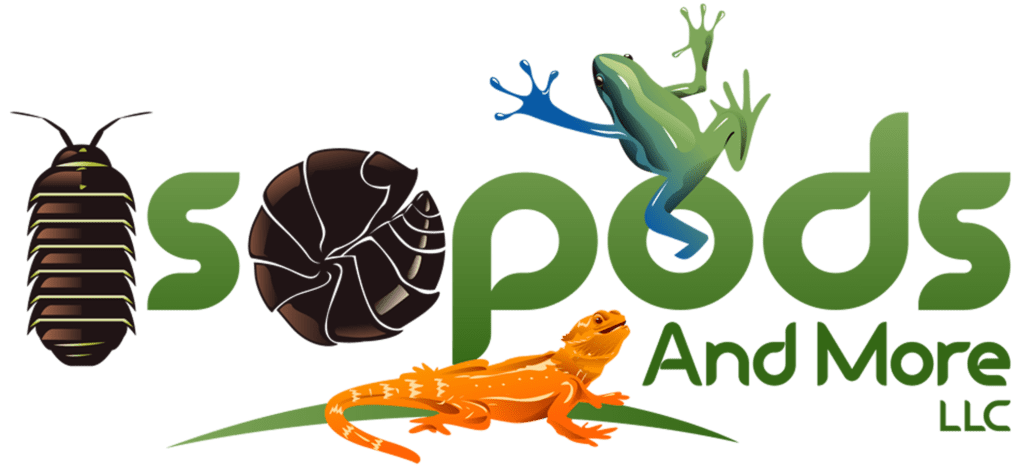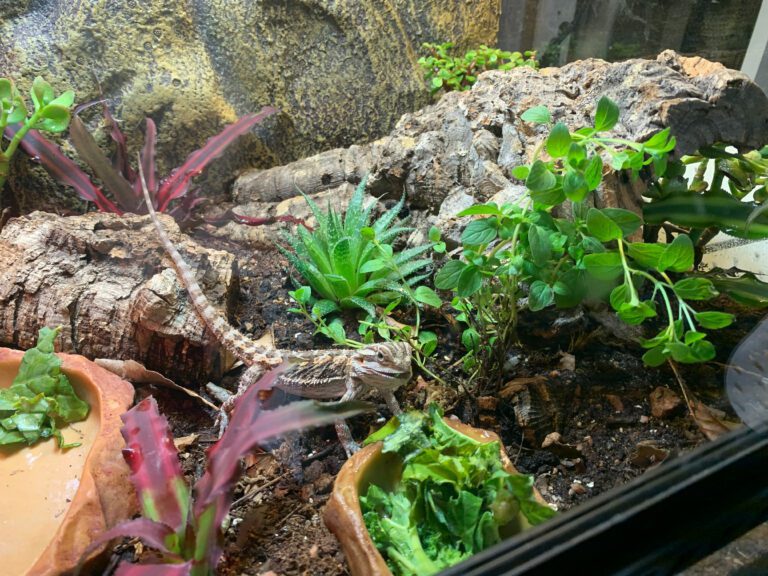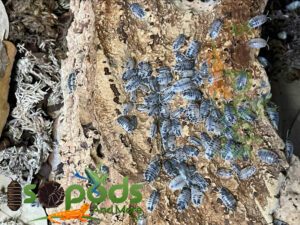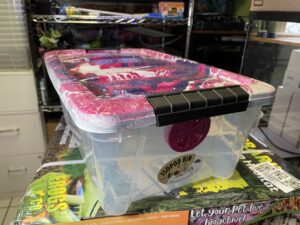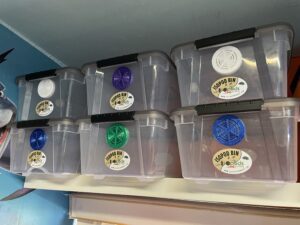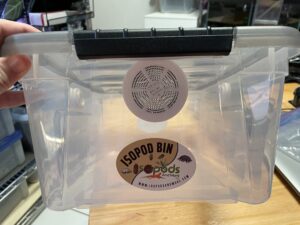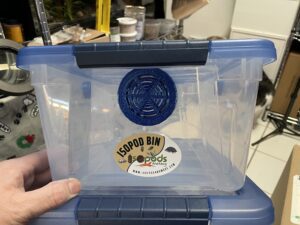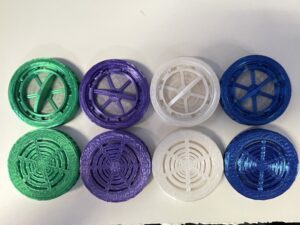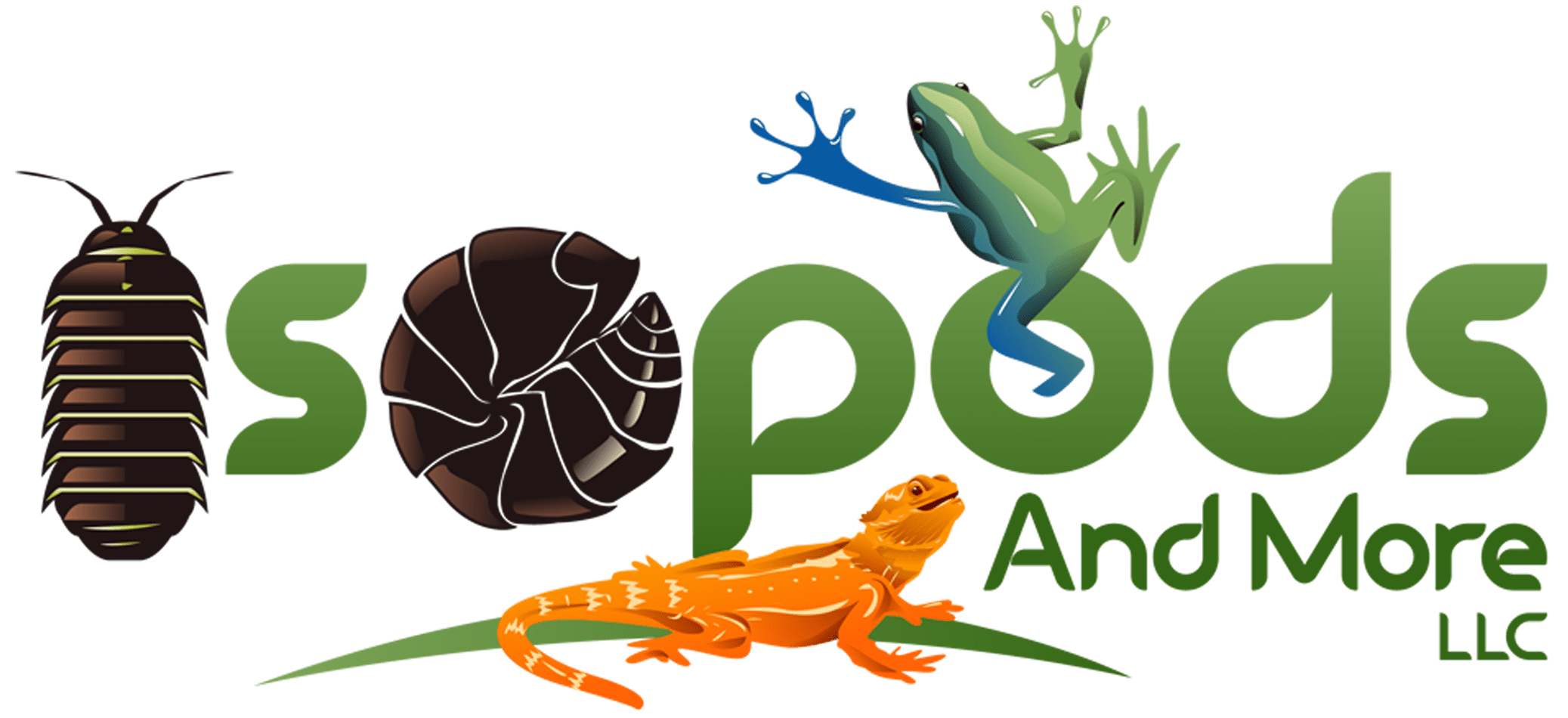Introduction: What is an Isopod?
In today’s society, it’s not uncommon to find people with a fascination for all things small and creepy-crawly. From tarantulas to poison dart frogs, there is an exotic pet for everyone. However, one pet that seems to be gaining popularity lately is the isopod. These strange little creatures are often overlooked, but they play a vital role in keeping a bioactive terrarium healthy and thriving. With a bioactive clean up crew, you will never have to worry about your habitation looking messy again. So, what exactly is an isopod?
An isopod is a small, segmented creature that resembles pillbugs or sowbugs. Often referred to as woodlice, these creatures are actually crustaceans, not insects. They can be found in a variety of colors and patterns and range in size from 2 to 20 mm. In the wild, isopods can be found in damp environments such as underneath logs or rocks. They are scavengers and help maintain bioactive habitations in various ways.
There are various species of woodlice, but the most common type used in bioactive habitats include Porcellio scaber, Porcellionides pruinosus, Porcellio laevis and Venezillo parvus. These are small, slow-moving, and relatively easy to care for. The bioactive clean up crew are also very efficient at breaking down organic matter and keeping your terrarium clean.
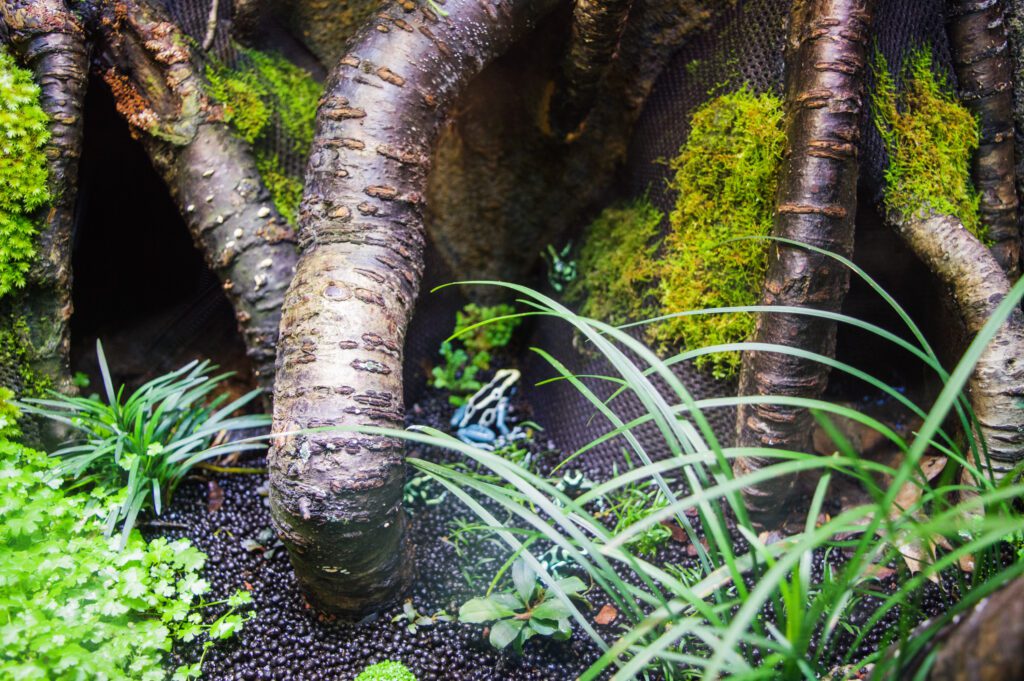
What are the Benefits of Adding Isopods to Your Bioactive Terrarium?
With their ability to break down organic matter, isopods play a vital role in keeping the bioactive terrarium clean and healthy. They can help to create a more realistic and balanced ecosystem. When setting up an animal vivarium, it is essential to include various species that will play different roles.
Here are some of the isopod benefits that make them a great addition to any habitat:
1. Aiding in the decomposition of organic matter
One of the woodlice’s most critical roles in a vivarium is its ability to break down organic matter. This includes leaves, wood, and other plant matter. These creatures help to create a more balanced and healthy environment by breaking down this organic matter and recycling it back into the soil. You can introduce woodlice into your vivarium by adding them to the soil or placing them on top of leaves and other organic matter.
Most woodlice sold for vivariums are detritivores, meaning they primarily eat decaying organic matter. For instance, a common pillbug, Porcellio scaber, is known to eat decaying leaves, wood, and other plant matter. This helps to break down the organic matter and make it more nutrient-rich for other plants in the vivarium. Your woodlice occasionally eat live plants, which is not their primary food source.
2. Controlling mold and mildew growth
Mold and mildew can be a problem in any type of vivarium. However, keeping these under control in an animal vivarium is imperative. This is because mold and mildew can quickly take over and break down the organic matter essential for a healthy ecosystem. Woodlice can help to control mold and mildew growth in your habitat.
Woodlice such as Porcellionides pruinosus “powder blue” are constantly searching for food and will eat mold and mildew if they come across it. By eating fungi and bacteria, they help to keep the vivarium clean and free of mold and mildew. This makes them an excellent choice for a bioactive clean up crew. Keeping the mold and mildew under control can create a healthier environment for your plants and other animals. This will relieve you of the need to constantly clean the vivarium, as woodlice will do most of the work for you!
3. A natural food source for other animals in the vivarium
Isopod can also serve as a natural food source for other animals in your vivarium. Smaller isopod such as Venezillo Parvus “Dalmatian” is often eaten larger animals such as lizards, frogs, and birds. This is one reason why it is essential to include a variety of different species in your animal garden. By having a food chain, you can create a more realistic and balanced ecosystem.
In most cases, you will want to introduce woodlice into your vivarium before adding other animals. This way, they will have time to establish themselves and start breeding. Once you have a good population of these species, you can then add other animals to the garden. Make sure to research what type of animals you want to add to your vivarium and what their diet consists of. This will help you to determine how many clean-up crews you will need to include in the habitat.
4. Increasing humidity levels
As the bioactive clean up crew eat and move through the soil, they help to aerate it and increase the humidity levels. This is beneficial for many of the plants and animals that live in a vivarium. Many plants require high humidity levels to thrive, and these species can help to create this environment.
One way to increase the humidity levels in your vivarium is to add a water dish for the isopod species. These species will drink from the water dish and then release it back into the soil, increasing the humidity levels. You can also mist the terrarium regularly to further increase the humidity levels. Just be sure not to mist too often, as this can cause mold and mildew to grow.
5. Providing aeration to the soil
As isopod moves through the soil, it helps to aerate it and increase the oxygen levels. This is beneficial for the plants and animals that live in the vivarium. Plants need oxygen to grow, and isopod can help to provide this. In addition, animals such as lizards and frogs need oxygen to breathe. By increasing the oxygen levels in the soil, you can create a healthier environment for the plants and animals in your animal garden.
In most cases, you will not need to do anything special to increase the oxygen levels in your vivarium. The clean-up crew species will help to aerate the soil as they move through it. However, if you have a very dense vivarium with little space for them to move, you may need to provide additional aeration. This can be done with an air stone or by opening the vivarium lid for a few minutes each day.
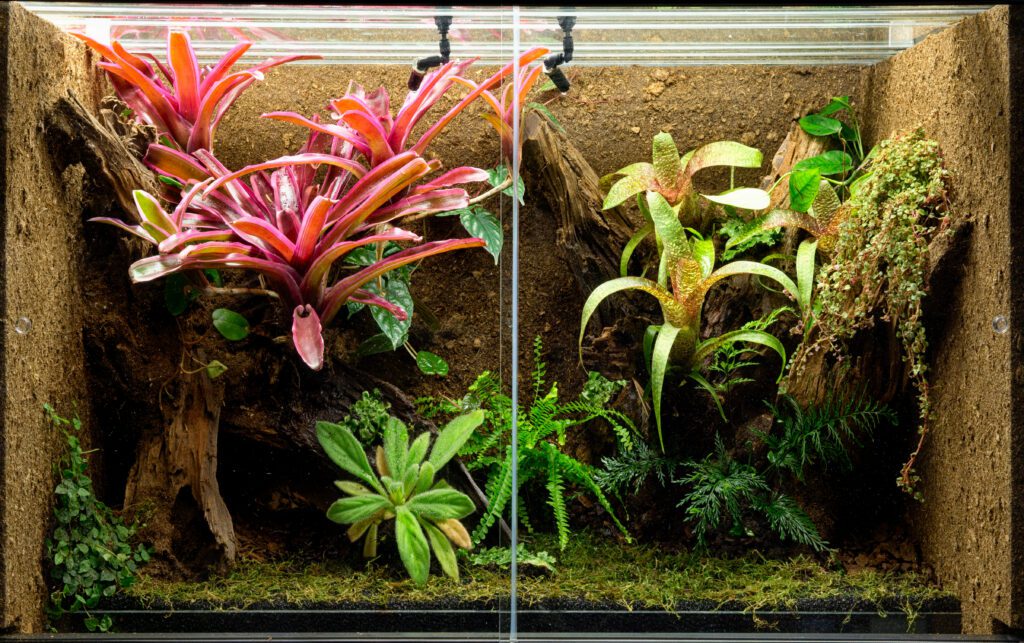
How to Care for Your Isopods
Clean-up crew care is vital for their health and the success of your animal garden. Here are a few tips on how to care for your clean-up crew:
1. Feed them regularly
Isopod care starts with feeding them regularly. Your clean-up crew will need a food source that contains moisture, such as fruits and vegetables. You can also purchase commercial isopod food, which is often made of shredded coconut. Leaf litter serves as food and hiding places for the isopods. It is essential to feed your clean-up crew regularly because they will not survive on the moisture alone.
2. Provide a hiding place
It is also essential to provide a hiding place for your clean-up crew. This can be a piece of bark or rock. The hiding place should be large enough for them to hide underneath. Woodlice like to hide during the day and come out at night to feed.
3. Keep the bioactive clean up crew moist
Isopods also need to be kept moist. This can be done by regularly misting the habitat or adding a water dish. The animal garden should never be allowed to dry out, as this will kill them completely. You can also add a substrate such as a coco coir, which will help to hold moisture.
4. Provide adequate ventilation
It is significant to provide adequate ventilation for your clean-up crew. This can be done by opening the vivarium lid for a few minutes each day. In addition, you can add an air stone to the vivarium. The air stone will help oxygenate the water and the soil, which benefits these creatures.
5. Avoid pesticides
Pesticides should also be avoided when caring for woodlice. These chemicals can kill the clean-up crew, even if they are not the target of the pesticide. If you need to use pesticides, be sure to remove them from the habitat before using them.
6. Provide a calcium source
Calcium is also crucial for the isopods. This can be provided in the form of a cuttlebone or by adding calcium powder to the food. Calcium is necessary for the clean-up crew to molt properly. Providing a calcium source will help ensure that your clean-up crew stays healthy and thrive.
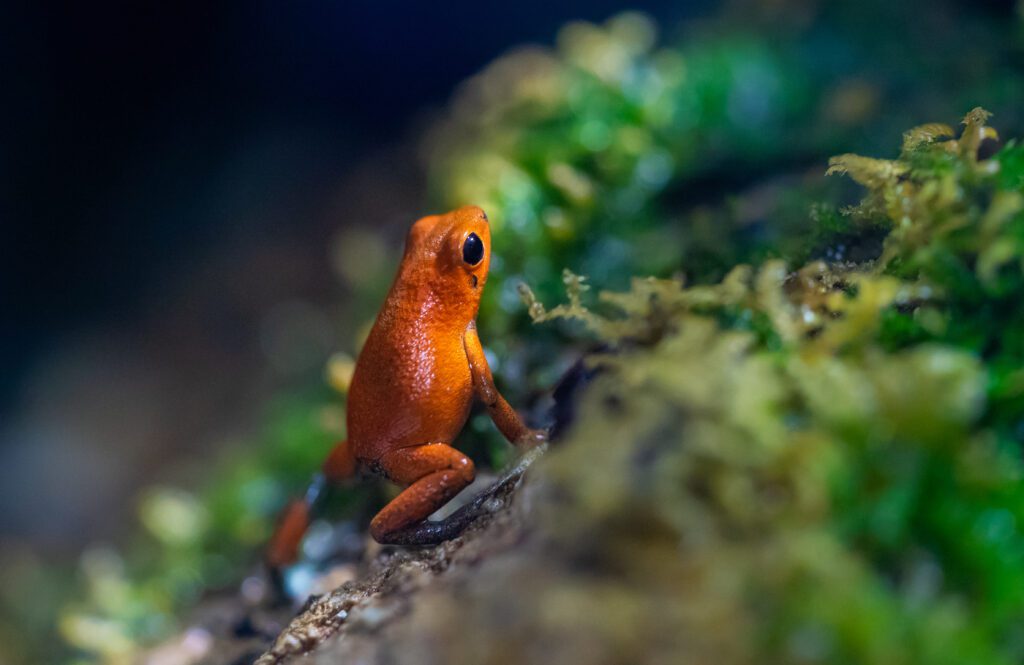
Conclusion: How to Choose Which Isopods Are Suitable for a Bioactive Clean Up Crew?
When it comes to choosing which isopods are suitable the bioactive clean up crew, there are a few things you need to consider. First, you need to decide what type of isopod you need. There are various types of them, but the main ones that can be used for bioactive habitats are Porcellio laevis, Porcellio scaber, Porcellionides pruinosus, and Venezillo parvus. These species can be found online or at your local pet store.
You also need to decide what size is right for you. Clean-up crew species come in various sizes, from small to large. The size you choose will depend on your bioactive habitat and the other animals you have in it. If you have a small terrarium, you will need to choose a smaller isopod.
Finally, you need to consider the climate you live in. If you live in a warm environment, you will need to choose an isopod that can tolerate the heat. On the other hand, if you live in a cold climate, you will need to choose an isopod that can tolerate the cold.
By considering these aspects, you will be able to choose the right isopod for your needs. With the proper care, your bioactive clean up crew will thrive and be a valuable part of your terrarium.
